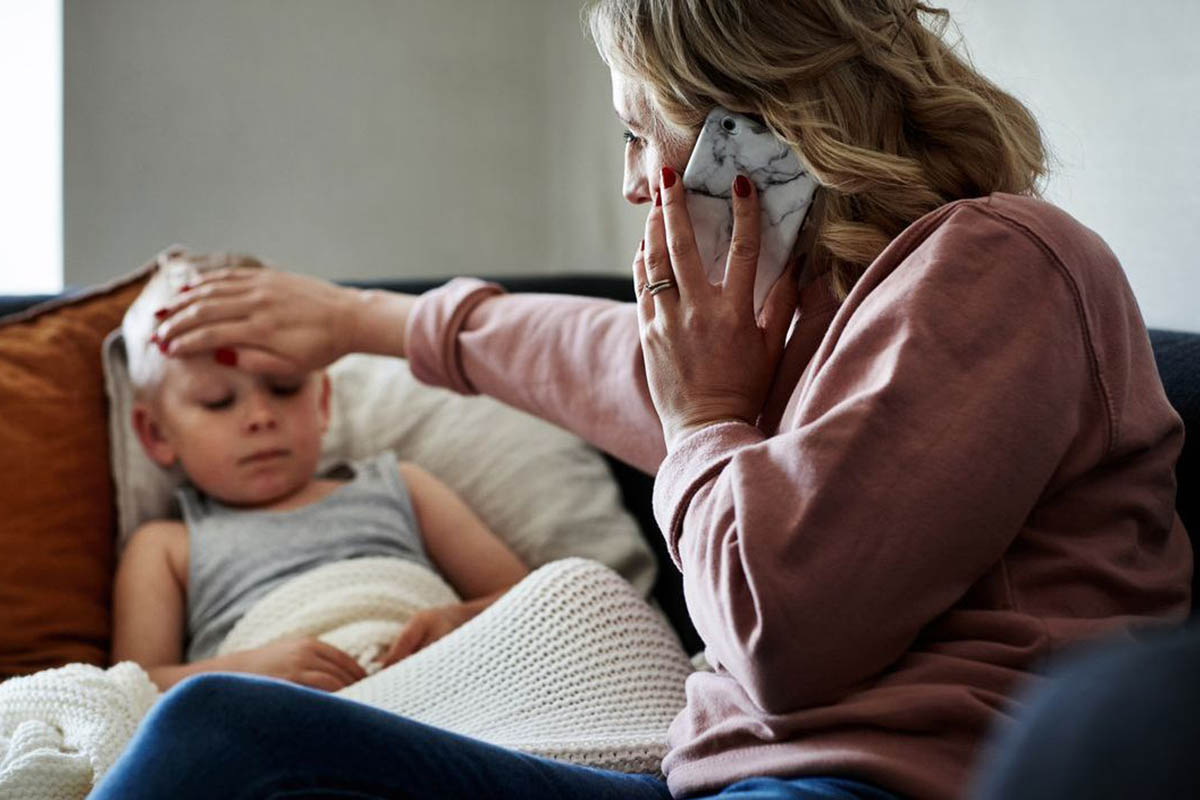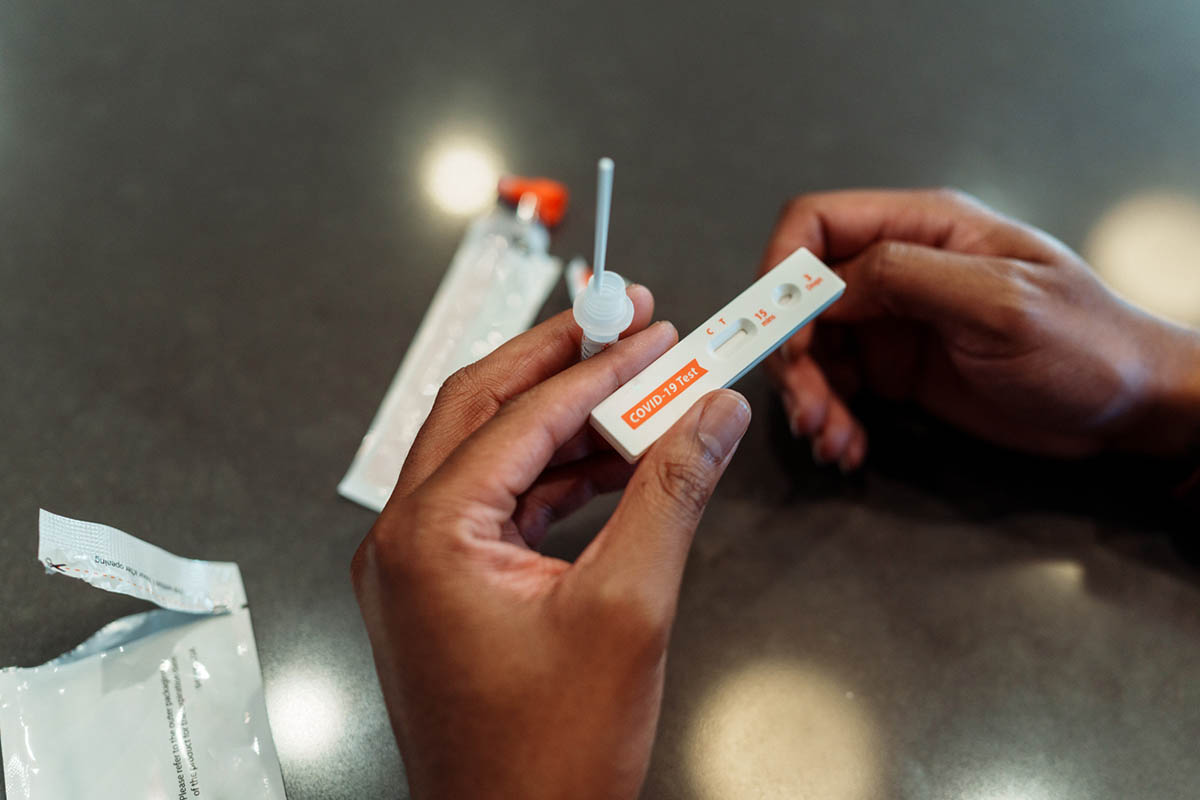
Prim Care Companion CNS Disord 2022;24(6):22cr03324
To cite: Alphonso H, DeMoss D, Hurd C, et al. Vaccine-induced psychosis as an etiology to consider in the age of COVID-19. Prim Care Companion CNS Disord. 2022;24(6):22cr03324.
To share: https://doi.org/10.4088/PCC.22cr03324
© 2022 Physicians Postgraduate Press, Inc.
aJohn Peter Smith Health Network, Fort Worth, Texas
bUniversity of North Texas Health Science Center/Texas Christian University, Fort Worth, Texas
cDepartment of Medicine, Burrell College of Osteopathic Medicine, Las Cruces, New Mexico
dDepartment of Psychiatry, Duke-National University of Singapore (NUS), Singapore
eDuke University School of Medicine, Durham, North Carolina
*Corresponding author: Helene Alphonso, DO, John Peter Smith Hospital: John Peter Smith Health Network, 3200 W Euless Blvd, Euless, TX 76040 ([email protected]).
This is a perplexing case of a patient with no psychiatric, trauma, family history, or personality pathology who received the mRNA-1273 (Moderna) coronavirus disease 2019 (COVID-19) vaccine and within a month developed an acute paranoid state.
Case Report
Ms A is a 45-year-old Asian American woman who presented to the outpatient psychiatry department after having psychosis for 3 months. Her new-onset paranoia and auditory hallucinations began 1 month after receiving her second mRNA-1273 (Moderna) COVID-19 vaccine. She abruptly quit her job of 18 years and stopped eating—losing 56 lb in 4 months. The patient would only get dressed in the dark, believing people could see her in her closet or bathroom behind a closed door. She would pace all day and stopped doing the household chores she had done for years. She would wake her husband in the middle of the night trying to convince him that the neighbors were going to hurt her and were breaking into their home. She became angry when he tried to convince her these things were not real. Due to this irrational fear, she would sleep only 2 to 3 hours per night and no longer slept in the bedroom, preferring to lock herself in the bathroom to sleep. She heard whispers of people talking about her and would carry on full conversations with them. She would only do this in a room alone with the door closed. Family would ask her who she was talking to, and she would again become angry. She told the clinician that they had to explain to her family that these people were real and there was nothing wrong with her. Her affect was full, and psychomotor activity was unremarkable, as was her speech rate.
The following history was compiled from records from the patient’s previous visits to the medical emergency department, psychiatric intake, and clinic, as well as from the patient and family members. Past psychiatric history was negative for any mood or thought disorders. Her primary care physician regularly managed her medical conditions and completed depression screening with consistently negative Patient Health Questionnaire-21 scores. Her medical history included diabetes mellitus II, hypothyroidism, and hypertension, all of which were well controlled. Family history was negative for psychiatric and neurologic conditions. Ms A had some schooling in her home country and was married with 2 grown children. She had worked the same retail job for 18 years and came to the United States with her husband 20 years ago. She had no previous legal issues or substance abuse history. She was fluent in English, but an interpreter was present for medical terms/explanations.
Her urinalysis, drug screen, complete blood count, and complete metabolic panel were within normal limits. Results for thyroid-stimulating hormone (1.37 mIU/mL; reference range, 0.36–3.74 mlU/mL), free T4 (1.34 ng/dL; reference range, 0.076–1.46 ng/dL), erythrocyte sedimentation rate (14 mm/h; reference range, 1–20 mm/h), anti–N-methyl-D-aspartate (NMDA) receptor antibodies, and C-reactive protein (< 0.29) were all within normal limits. Workup for systemic autoimmune or inflammatory conditions was negative with negative anti-nuclear antibodies and normal smooth muscle antibody titer, mitochondrial antibody immunoglobulin G (IgG), α-1 fraction, α-2 fraction, β fraction, γ fraction, albumin fraction, M spike, and double-stranded DNA. Her vitamin D level was low at 18.2 ng/mL (30–100 ng/mL), and replacement was provided 2 months after initial presentation. Computed tomography (CT) of the head without contrast was unremarkable and provided no evidence for dementia. She had not taken steroids in the months prior to presentation, and delirium was ruled out, as she consistently remained oriented x4 with no temporal alterations in sensorium.
At the time of presentation, the patient had some improvement on quetiapine extended release (XR) 150 mg and sertraline 50 mg but had stopped the quetiapine XR a few days before her visit due to sedation. Although she lacked depressive symptoms, major depressive disorder with psychosis was high on the differential considering her age, absence of medical etiology, and negative psychiatric history. Sertraline was increased to 100 mg, as she tolerated it well, with the hope that the psychosis would completely resolve.
The paranoia returned quickly after her visit. She refused to leave the home and showed signs of anxiety and agitation, such as pacing about and wringing her hands. Risperidone 2 mg at night was added, which was minimally effective and thus was increased to 4 mg within 2 weeks. The patient was uninsured and did not have access to electroconvulsive therapy due to cost and availability. She was referred to the neurology department for further imaging, autoimmune encephalitis panel, and possible lumbar puncture.
Discussion
This patient had no history of neuropsychiatric or mental illness until she received her second mRNA-1273 (Moderna) COVID-19 vaccine. Her acute-onset severe paranoia did not resolve spontaneously. Antipsychotic medication was helpful to reduce symptoms, but not enough to return to premorbid functioning. An in-depth medical workup failed to provide an explanation for her symptoms.
Over 250 million doses of the Moderna vaccine have been administered.2 This case is the second report, at the time of this writing, of new-onset psychosis shortly following administration of mRNA-1273 (Moderna) COVID-19 vaccine. The first case involved a man in his 30s with premorbid cluster A traits.3 On CT head with contrast, he was found to have hyperintensities throughout the subcortical and periventricular white matter. This finding supported the potential etiologic relevance of an acute intracranial inflammatory response.3 He improved with risperidone 3 mg, which is why we used this medication when quetiapine failed.
The differential diagnosis could include anti-NMDA receptor encephalitis,4 but our patient’s anti-NMDA antibodies screen was negative. While delirium, dementia, or stroke could cause these symptoms, she had no evidence of these conditions. Demyelinating diseases like Guillain-Barre syndrome are known side effects associated with viral vector vaccines but not in those utilizing mRNA vaccines.5 Vivid, realistic visual hallucinations are associated with peduncular hallucinosis caused by stroke or intracerebral hemorrhage and have been associated with COVID-19.6 Hemorrhage or ischemia were not detected in the pons, thalamus, or basal ganglia in the head CT of our patient. Her low vitamin D levels might have contributed to the presentation, but vitamin D replacement did not improve her psychosis.
Mechanistic Implications
Inflammation has long been theorized as a contributor to psychosis, and we hypothesized that there could be a commonality between it and COVID-19. A literature search of acute inflammatory markers involved with COVID-19 cases and with psychosis revealed that Th17 has been implicated in new-onset psychosis cases7 as well as COVID-19 pneumonia.8 Research on vaccine immune responses has largely focused on Th1 and Th2 enhancement.9 However, if certain mRNA vaccines trigger a Th17 response in some individuals, they are theoretically more prone to vaccine side effects such as psychosis and pneumonia. Companies developing booster vaccines could consider finding ways to spare Th17 cytokines to reduce such side effects.
Treatment Implications
Treatment as simple as aspirin has been associated with improvement in some patients with schizophrenia10 and reduced mortality in a meta-analysis of COVID-19 patients.11 Treatment of the underlying inflammation with nonsteroidal anti-inflammatory drugs and IgG may be considerations in theory. Potentially, vaccines that avoid activation of Th17 may lead to fewer side effects while still providing immunity.
Limitations
As with all case presentations, this report is limited in that the timing of onset of psychosis and the patient receiving the vaccine could be coincidental. While this patient was relatively fluent in English and translators were utilized, the language barrier does serve as a limitation. Another limitation is our inability to identify the patient’s reaction to the first injection if any. Also, while we hypothesize an inflammatory process as mechanistically explanatory, her CT was not conducted with contrast, so blood-brain barrier disruptions indicative of inflammation are undetectable.12 Deposits of gadolinium contrast are found in tissues,13 but the value of contrast in detecting inflammatory processes in the central nervous system argues for a more patient-centric approach opting for contrast or not. Follow-up imaging such as magnetic resonance imaging with contrast could have revealed such lesions in our patient at symptom onset and should be considered in aberrant neuropsychiatric presentations.
Conclusion
While most vaccinated patients do not develop psychiatric side effects, rare occurrences of psychosis after the mRNA-1273 (Moderna) COVID-19 vaccine are possible. In unusual new-onset psychosis patients, a history of recent vaccine administration as a possible potential etiology deserves consideration.
Submitted: May 18, 2022.
Published online: November 15, 2022.
Relevant financial relationships: Dr Rush has received consulting fees from Compass Inc, Curbstone Consultant LLC, Emmes Corp, Evecxia Therapeutics, Holmusk, Johnson & Johnson (Janssen), Liva-Nova, Neurocrine Biosciences Inc, and Otsuka-US; speaking fees from Liva-Nova and Johnson & Johnson (Janssen); and royalties from Guilford Press and the University of Texas Southwestern Medical Center, Dallas, Texas (for the Inventory of Depressive Symptoms and its derivatives). He is also named co-inventor on 2 patents: US patent no. 7,795,033: Methods to Predict the Outcome of Treatment With Antidepressant Medication, Inventors: McMahon FJ, Laje G, Manji H, Rush AJ, Paddock S, Wilson AS; and US patent no. 7,906,283: Methods to Identify Patients at Risk of Developing Adverse Events During Treatment With Antidepressant Medication, Inventors: McMahon FJ, Laje G, Manji H, Rush AJ, Paddock S. Drs Alphonso, DeMoss, Hurd, Oliphant, and Davis report no relevant financial relationships.
Funding/support: None.
Patient consent: The patient and family provided verbal consent to publish this case report, and information has been de-identified to protect anonymity.
References (13)

- Gilbody S, Richards D, Brealey S, et al. Screening for depression in medical settings with the Patient Health Questionnaire (PHQ): a diagnostic meta-analysis. J Gen Intern Med. 2007;22(11):1596–1602. PubMed CrossRef
- CDC. COVID-19 Vaccinations in the United States. CDC website. Accessed March 2, 2022. https://covid.cdc.gov/covid-data-tracker/#vaccinations_vacc-total-admin-rate-total
- Reinfeld S, Cáceda R, Gil R, et al. Can new onset psychosis occur after mRNA based COVID-19 vaccine administration? a case report. Psychiatry Res. 2021;304:114165. PubMed CrossRef
- Flannery P, Yang I, Keyvani M, et al. Acute psychosis due to anti-N-methyl-D-aspartate receptor encephalitis following COVID-19 vaccination: a case report. Front Neurol. 2021;12:764197. PubMed CrossRef
- Lu L, Xiong W, Mu J, et al. The potential neurological effect of the COVID-19 vaccines: a review. Acta Neurol Scand. 2021;144(1):3–12. PubMed CrossRef
- Nagysomkuti Mertse NM, Zenorini L, Müri R. Intracerebral hemorrhage, visual hallucination and COVID-19: what is the connection? a case-related review of the literature on peduncular hallucinosis following intracerebral hemorrhage. Clin Transl Neurosci. 2021;5(2):15. CrossRef
- Fang X, Zhang Y, Fan W, et al. Interleukin-17 alteration in first-episode psychosis: a meta-analysis. Mol Neuropsychiatry. 2018;3(3):135–140. PubMed CrossRef
- De Biasi S, Meschiari M, Gibellini L, et al. Marked T cell activation, senescence, exhaustion and skewing towards TH17 in patients with COVID-19 pneumonia. Nat Commun. 2020;11(1):3434. PubMed CrossRef
- Hotez PJ, Bottazzi ME, Corry DB. The Potential Role of Th17 Immune Responses in Coronavirus Immunopathology and Vaccine-Induced Immune Enhancement. Vol 22. Elsevier; 2020:165–167.
- Laan W, Grobbee DE, Selten J-P, et al. Adjuvant aspirin therapy reduces symptoms of schizophrenia spectrum disorders: results from a randomized, double-blind, placebo-controlled trial. J Clin Psychiatry. 2010;71(5):520–527. PubMed CrossRef
- Wijaya I, Andhika R, Huang I, et al. The effects of aspirin on the outcome of COVID-19: a systematic review and meta-analysis. Clin Epidemiol Glob Health. 2021;12:100883. PubMed CrossRef
- Zhang X, Liu X, Guo Y, et al. Strategies for visualizing inflammation. View. 2021;2(1):20200025. CrossRef
- Gulani V, Calamante F, Shellock FG, et al; International Society for Magnetic Resonance in Medicine. Gadolinium deposition in the brain: summary of evidence and recommendations. Lancet Neurol. 2017;16(7):564–570. PubMed CrossRef
Please sign in or purchase this PDF for $40.




